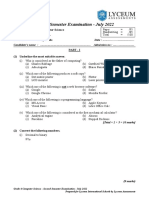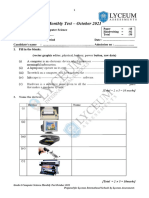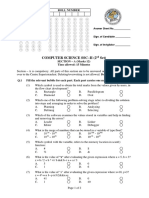0% found this document useful (0 votes)
247 views2 pagesCambridge Year6 Computing Notes Downloadable
The document outlines the Cambridge Primary Computing curriculum for Year 6, focusing on computational thinking, programming, and data management. It includes lessons on flowcharts, algorithms, programming constructs, data capturing, and spreadsheets, with explanations, activities, and review questions for each topic. Key vocabulary and practical activities are provided to enhance understanding and application of concepts.
Uploaded by
wambuasteve50Copyright
© © All Rights Reserved
We take content rights seriously. If you suspect this is your content, claim it here.
Available Formats
Download as DOCX, PDF, TXT or read online on Scribd
0% found this document useful (0 votes)
247 views2 pagesCambridge Year6 Computing Notes Downloadable
The document outlines the Cambridge Primary Computing curriculum for Year 6, focusing on computational thinking, programming, and data management. It includes lessons on flowcharts, algorithms, programming constructs, data capturing, and spreadsheets, with explanations, activities, and review questions for each topic. Key vocabulary and practical activities are provided to enhance understanding and application of concepts.
Uploaded by
wambuasteve50Copyright
© © All Rights Reserved
We take content rights seriously. If you suspect this is your content, claim it here.
Available Formats
Download as DOCX, PDF, TXT or read online on Scribd
/ 2































































